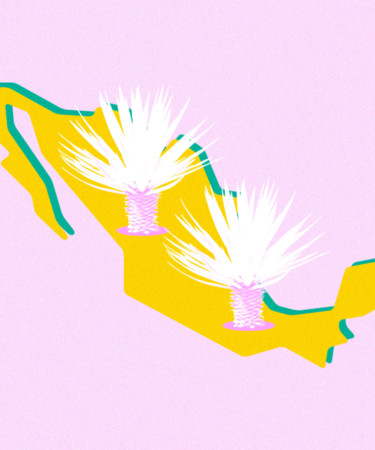In wine, the word terroir is used to describe the taste characteristics and flavors that are imparted from the earth and environment from which the wine was produced. However, the French term, which loosely translates to earth and soil, can also be associated with spirits like tequila. Most know that tequila is made from the agave plants that reside in the Mexican state of Jalisco, but it’s much less widely known that there are two distinct types of the spirit produced here: highland tequila and lowland tequila. To understand the difference between the variations, we spoke with Jose Valle, lead bartender at the Mezcal Bar at the Drift Hotel in San Jose del Cabo, Mexico.
“The terms highland and lowland refer to the respective regions of Jalisco where the agaves used for tequila are grown,” says Valle. In that sense, the difference between the two may sound simple. But as in wine, the terroir of each region plays a large role in the distinct tastes each agave can produce.
Highland tequilas are made from agave plants that are grown in the Jaliscan Highlands, more commonly known as Los Altos. Sitting at around 7,500 feet above sea level, the red clay soil in Los Altos is natively called tierra roja, and is rich in iron. “Here, the agave is grown in what’s considered a higher-stress environment because they are closer to the direct heat of the sun,” explains Valle. This affects the way the plants grow and ultimately determines the flavor tones they will produce in the tequila. “Highland tequila has a fruitier flavor that can be attributed to the sweetness of the agave,” he adds.
Just a bit beneath Los Altos lies El Valle, or Tequila Valley, where lowland agaves are grown. As Valle notes, “it’s important to remember that, although the valley sits at a lower elevation than Los Altos it’s still pretty high up.” Ranging between 3,500 and 5,200 feet above sea level and averaging around 3,870 feet, El Valle contains a natural element crucial to its terroir: the Volcán de Tequila. Although the volcano is no longer active, it is the largest contributor to the earth in the lowlands and creates the mineral-rich volcanic soil known as tierra negra. “The minerals in this soil give the agave an herbal flavor as well as an earthy tone,” Valle says.
Regardless of where the agaves are grown, the rules and regulations that govern tequila mean that the process for making the spirit is the same. But in order to taste the true refinement that each terroir brings to tequila, it’s best to look for a blanco tequila; lowland tequilas tend to have a green, vegetal taste that can range from herbal and peppery to floral and citrusy, while highland tequilas are softer with just a touch of sweetness. “Because of this, highland tequilas are often regarded as the better of the two,” Valle says. Still, it’s important to bear in mind that the quality of the distillate is not justified by the location, and that the distinction between highland and lowland simply represents the environment the agaves come from.
